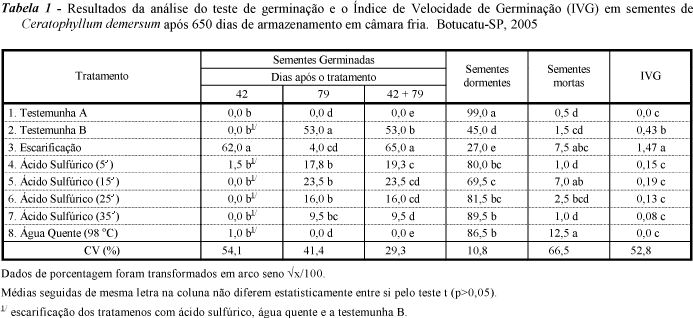Ceratophyllum demersum is prominent among the several immersed aquatic weeds that proliferate in the reservoirs of hydroelectric power plants due to its great reproduction capacity and biomass production. Despite this problem, studies related to the propagation mechanism and persistence of that species in aquatic ecosystems are quite scarce in Brazil. Thus, the objective of this study was to evaluate different methods of seeds dormancy break of the aquatic weed C. demersum collected at Vírgula Pond in Tietê River-SP Brazil. The collected seeds were grouped into two lots, one constituted by seeds in a container with distilled water and the other by seeds in paper bags under cold camera conditions (16.8 ºC). Tests of dormancy break were accomplished 650 days after seed collection using the following treatments: I) Scarification, II) Immersion in concentrated sulfuric acid (98%) for 5, 15, 25 and 35 minutes, III) Immersion in hot water (98 ºC) and IV) Control A (seeds in a container with distilled water) and Control B (seeds in paper bags). The results showed that the species C. demersum produces fertile seeds which can remain viable in the sediment for several years after fecundity. Seed scarification was the most effective method for dormancy break, significantly outdoing the other treatments and providing 65.0% of germination at 79 DAT. Further studies are needed to determine an appropriate methodology for seed dormancy break evaluation of C. demersum.
aquatic plant; weed; germination; Ceratophyllaceae



